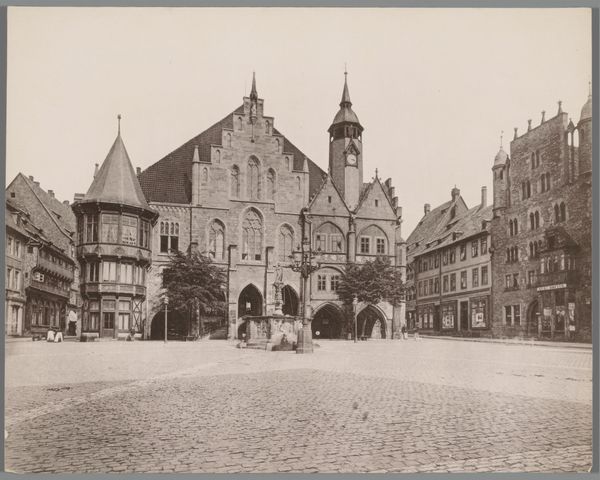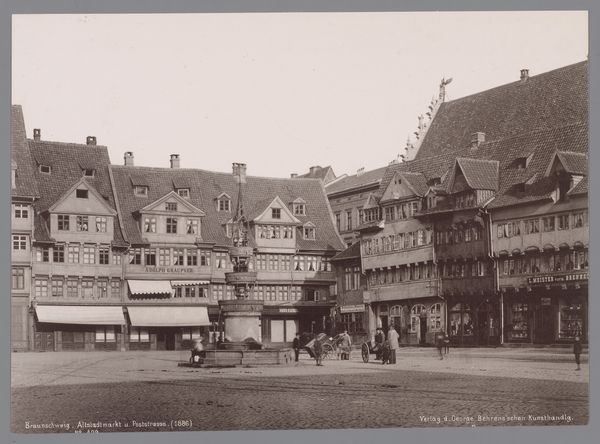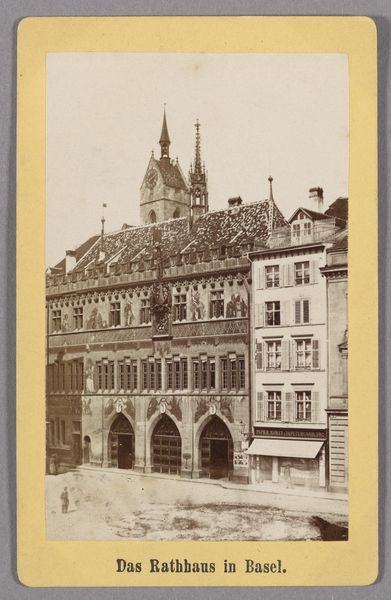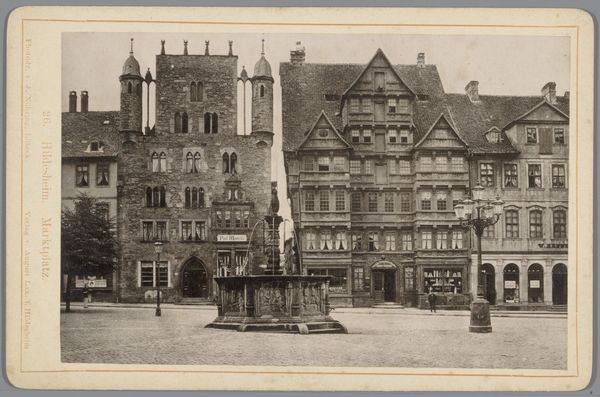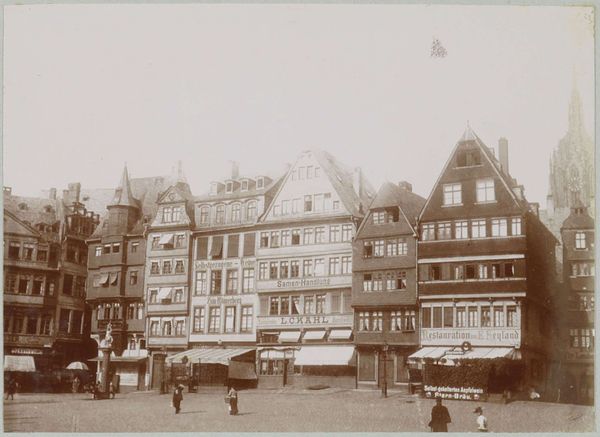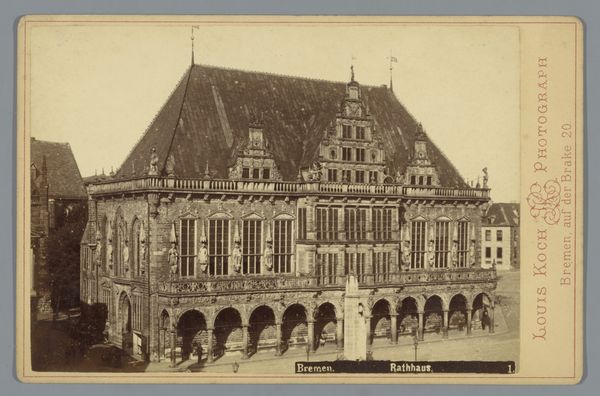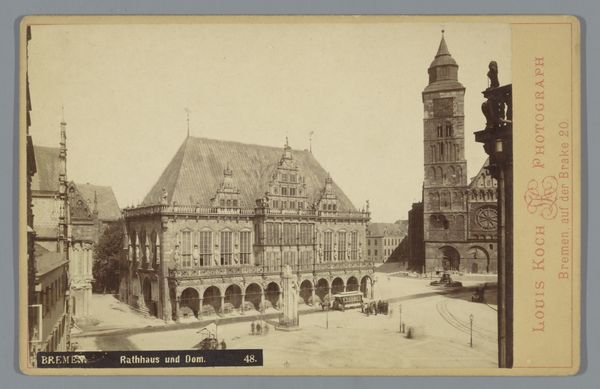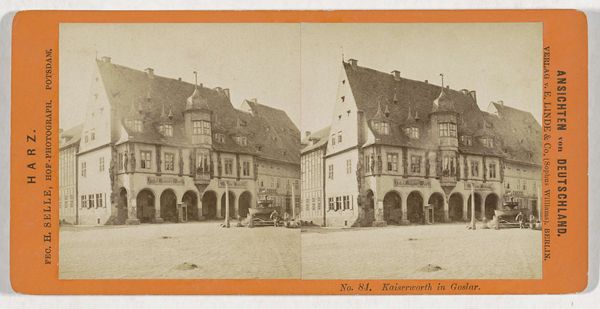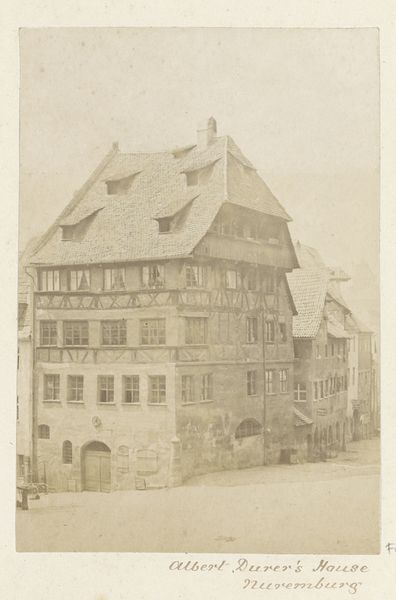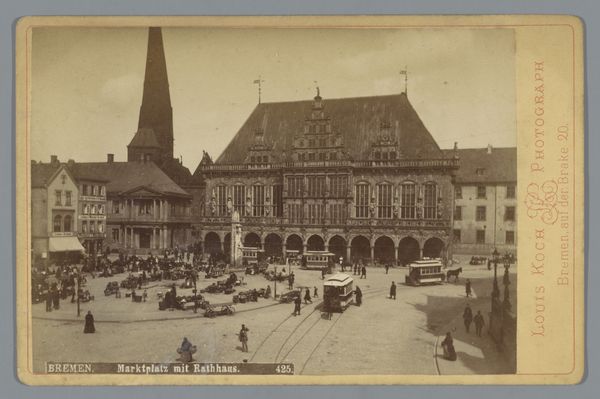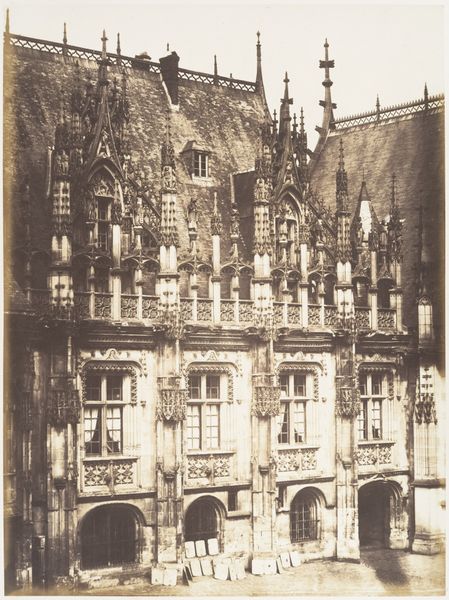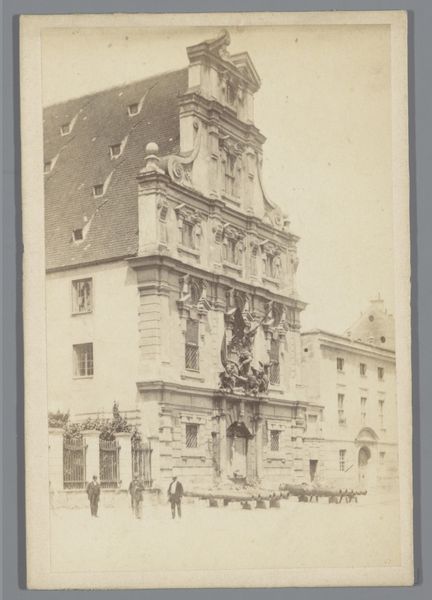
print, photography
#
print photography
# print
#
photography
#
historical photography
#
19th century
#
cityscape
#
realism
Dimensions: height 207 mm, width 266 mm, height 312 mm, width 441 mm
Copyright: Rijks Museum: Open Domain
Editor: We’re looking at "Raadhuis van Rothenburg ob der Tauber," a photograph taken in 1897 by Zedler und Vogel. It's a captivating cityscape. There's such stillness and grandeur. How would you interpret this image in its historical context? Curator: It’s fascinating to see Rothenburg’s town hall documented at the end of the 19th century. Photographs like this weren't simply neutral records; they actively shaped perceptions of place. This image presents Rothenburg as a bastion of German heritage at a time when national identity was a highly contested space. Do you notice anything in the composition that speaks to this? Editor: Well, the building itself dominates the scene. The angle emphasizes its size and architectural detail. There aren’t many people around, almost as if to amplify the importance of the building itself over everyday life. Curator: Exactly. Consider the rise of historical preservation movements in the late 19th century, which focused on restoring and celebrating medieval architecture as symbols of national pride. This image contributes to that visual narrative. The crispness of the photographic print lends an air of authority and authenticity to the depicted scene. Do you think this portrayal affected how people viewed Rothenburg and other similar towns? Editor: Absolutely! Seeing this perfectly preserved town hall probably fuelled the desire to protect such historic places. It creates a romantic image of Germany's past. I suppose photography played a crucial role in constructing that narrative. Curator: Precisely. It highlights how seemingly straightforward photographs are active participants in larger socio-political projects. It's less about reflecting reality, and more about shaping it for specific audiences and purposes. Editor: That's a perspective shift for me. It changes how I will look at historical photographs. Curator: And that's the power of understanding the contexts that surround art's creation and reception.
Comments
No comments
Be the first to comment and join the conversation on the ultimate creative platform.

